 Mobile Tutorial
Mobile Tutorial Mobile News
Mobile News Domestic charges are too cheap! China Mobile, China Unicom and Telecom should learn from foreign 5G tariffs: faster speeds are more expensive, etc.
Domestic charges are too cheap! China Mobile, China Unicom and Telecom should learn from foreign 5G tariffs: faster speeds are more expensive, etc.According to news on July 2, since the commercialization of 5G in 2019, the performance of the three major domestic operators has continued to improve. 5G has driven the growth rate of operators’ ARPU value from negative to positive, and the total revenue of domestic mobile services has also increased. According to statistics from the China Academy of Information and Communications Technology, 5G will directly drive my country's total economic output to 1.86 trillion yuan in 2023, which will have a significant impact on the economy and digital transformation. However, what needs to be noted is that after the first half, the operator's 5G DOU has reached a high level and traffic growth has slowed down. As 5G-A begins large-scale deployment in China, 5G network capabilities will reach a new level. This lays a more solid foundation for operators to explore the adoption of new multi-dimensional billing models including rate-based, thereby further increasing revenue. Globally, especially in the European market, many operators have successfully practiced this, which is worthy of reference in the domestic market. The 5G rate billing model is becoming more and more common around the world. What is the rate billing model? In the context of mobile network services, the rate billing model includes three major connotations. One is intergenerational/highest rate, that is, the highest rate that a mobile phone can achieve after accessing the network, which is divided into uplink and downlink rates and standards (4G or 5G). It is generally a key indicator for grading package levels; the second is certainty/minimum guarantee, that is, the lowest rate that can be achieved after the mobile phone is connected, which is also divided into uplink and downlink rates and sub-standards; the third is differentiation/priority, that is, Users with higher speed packages have higher access priority. From a global market perspective, Finnish operators have provided rate-based tariff packages in the 4G era, which include unlimited data traffic. In the 5G era, several major Finnish operators have continued this model. Taking Elisa as an example, the operator offers different 5G packages including 300Mbps, 600Mbps, 1000Mbps downlink speeds and the "highest speed" Premium package, all of which provide unlimited data traffic. Speed remains the main driver of 5G upsell in the country.

“Now, in the 5G era, operators in other regions have also begun to adopt the 5G rate billing model.” Nicole McCormack, chief analyst of broadband and bundling pricing at market research company Omdia, told C114 that according to Omdia estimates, about 20% of the world’s 5G Operators have launched package services of different speed levels for smartphone users. The success of the "Finnish model" has attracted many operators from other countries to join this team.
Among them, KPN in the Netherlands introduced a new rate billing package in the first quarter of 2024, with immediate results. Mobile service revenue increased by 7.8% year-on-year, 30,000 new postpaid users were added, and ARPU increased by 5% year-on-year. In addition, the Bulgarian market will begin to introduce rate charges for commercial 5G in 2020. During 2020-23, the average ARPU of operators in the country increased by 8% and DOU by 40%.
5G-A makes rate billing further possible
Currently, my country’s 5G user access traffic accounts for more than 50%, and 5G has become the main network for traffic carrying. However, according to statistics from the Ministry of Industry and Information Technology, my country's mobile data traffic business revenue in 2023 will be 636.8 billion yuan, a decrease of 0.9% from the previous year, and the growth rate of mobile data traffic business revenue has slowed down. At present, everyone's traffic anxiety has almost generally disappeared, and new "pain points" have begun to manifest themselves as users' need for higher-quality network connections.
As early as 2019, when 5G started commercialization, China Mobile proposed to explore multi-dimensional 5G billing models, such as billing by traffic, rate, bandwidth, delay, slice, and function. During MWC Shanghai in 2023, China Academy of Information and Communications Technology and GSMA 5G IN jointly released the "5G Business Model Innovation and Development White Paper (2023)", which also demonstrated the new exploration of pioneer operators in 5G billing methods in the mass consumer market.
This shows that domestic operators have been actively discussing and exploring new multi-dimensional billing models to ensure better service experience for users. Moreover, in the current 5G packages, domestic operators have tried to include the highest speed in different network rights such as exclusive and high-speed, but it is not explicit, and relatively speaking, users have not paid much attention. However, this does not count as a true rate billing model.
Obviously, operators’ multi-dimensional monetization capabilities for packages will continue to evolve with the upgrades in network capabilities, terminal development and other aspects. In 2024, China will take the lead in launching large-scale deployment of 5G-A. This will lay a more solid foundation for operators to provide multi-dimensional billing models based on rate. This is because these new billing business models have higher requirements on the network, and the enhanced network certainty and reliability of 5G-A will enable operators to better fulfill promises such as speed and latency. At the same time, in the 5G-A era, the introduction of new models such as rate charging is also expected to help operators achieve the "next hop" for 5G monetization.
The successful experience in the European market has shown that after operators greatly promote the growth of revenue and mobile ARPU value through the rate billing model, operators are more focused on creating the best experience for users. This actually forms a positive cycle of industry development: operators launch rate billing packages to increase revenue and ARPU. The increase in revenue further drives operators to optimize and upgrade 5G networks to provide users with a better experience.
Cultivating user habits to change overnight is not advisable
Nicole McCormack said that it is easy for operators to introduce rate-based billing package plans in 5G services, because rate-based billing has existed in the wired home broadband field for many years, so consumers are not interested in it Not unfamiliar.
But she emphasized, "The key is that telecom operators should let consumers understand the peak speed - even publicize in the market what different speeds mean for different application performance, and how the experience will be different."
From the international market It seems that unlike Finland's comprehensive rate-based billing model, many operators have adopted a dual billing model - not only providing rate-based packages (stratified according to different rate levels, most of which provide unlimited data traffic), but also providing Traffic-based packages (billed according to traffic package size).

- Domestic operators can first launch rate billing models for high-end packages, including peak rates, scene experience guarantees, etc.
- The rate tiers of rate billing packages need to include the highest rate, minimum rate guarantee, network priority access, etc., so that users in different tiers can clearly perceive differentiated services.
- Taking the rate billing model as the entry point, high-quality, reliable, and differentiated 5G services will become the development focus of my country's operators in the 5G-A era.

The above is the detailed content of Domestic charges are too cheap! China Mobile, China Unicom and Telecom should learn from foreign 5G tariffs: faster speeds are more expensive, etc.. For more information, please follow other related articles on the PHP Chinese website!
 5G核心网UPF是什么Jan 30, 2023 am 11:18 AM
5G核心网UPF是什么Jan 30, 2023 am 11:18 AMUPF是指“用户平面功能”,是3GPP 5G核心网系统架构的重要组成部分,主要负责5G核心网中用户平面数据包的路由和转发相关功能;UPF在5G的边缘计算和网络切片技术中发挥着低延迟和大带宽的重要作用。
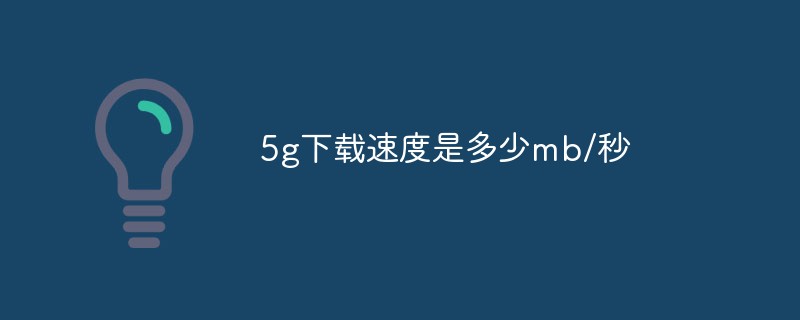 5g下载速度是多少mb/秒Apr 20, 2023 pm 02:18 PM
5g下载速度是多少mb/秒Apr 20, 2023 pm 02:18 PM5g下载速度是128mb/秒即1Gbps,这意味着在5g网络中,下载1g的文件只需10秒;5G WiFi的入门级速度是433Mbps,这至少是现在WiFi速率的三倍,一些高性能的5G WiFi还能达到1Gbps以上。
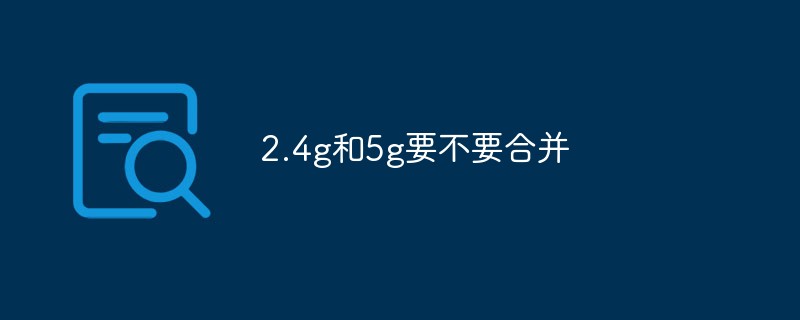 2.4g和5g要不要合并Nov 24, 2022 am 10:27 AM
2.4g和5g要不要合并Nov 24, 2022 am 10:27 AM2.4g和5g不建议合并;因为双频合一有利有弊,部分手机可能连接双频合一的wifi比较困难;对于一般的无线路由器如果没有弱信号剔除功能,那么开启双频合一后手机可能一直连着2.4G频段,根本不会切换到速率更快的2.4G频段,除非手动开关WIFI,因此建议分开设置。
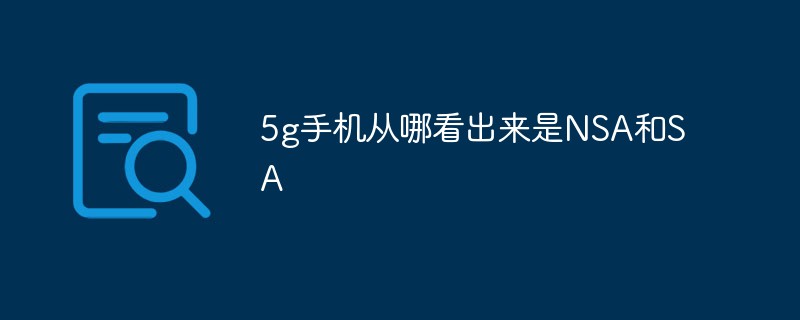 5g手机从哪看出来是NSA和SAMar 16, 2023 pm 05:48 PM
5g手机从哪看出来是NSA和SAMar 16, 2023 pm 05:48 PM5g手机从网络类型可以看出来是nsa和sa。操作方法:1、打开手机设置,点击“双卡与移动网络”;2、进入“双卡与移动网络”后,点击“高级设置”;3、在“高级设置”界面,找到“5G网络类型”即可查看。
 11有没有5g网络Nov 14, 2022 pm 01:58 PM
11有没有5g网络Nov 14, 2022 pm 01:58 PMiPhone11没有5g网络,iPhone11最高仅支持4G移动网络,网络制式覆盖FDD-LTE和TD-LTE等主流频段;iPhone11采用A13仿生芯片,内置GPS/GNSS,搭载两个1200万像素超广角及广角摄像头,有128G、256G可选 。
 vivox27是5g手机吗Dec 08, 2022 pm 04:53 PM
vivox27是5g手机吗Dec 08, 2022 pm 04:53 PMvivox27不是5g手机。vivox27的处理器是高通骁龙675和骁龙710,分别搭载了X15和X12基带,不支持5G网络,仅支持4g、3g、2g。骁龙710处理器采用了10nm的制程工艺,CPU使用了Kyro 360架构,其图像处理能力。骁龙675处理器采用三星11nm工艺,支持FHD+显示,内置多核人工智能引擎AI Engine,在AI应用中实现高达50%的整体性能提升。
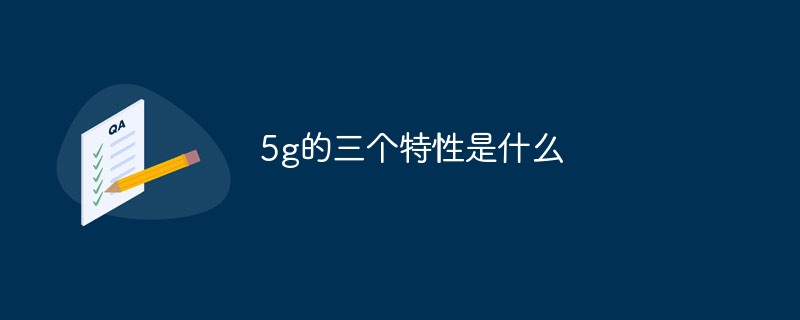 5g的三个特性是什么Dec 09, 2020 am 10:55 AM
5g的三个特性是什么Dec 09, 2020 am 10:55 AM5g的三个特性是:1、高速率;在实际应用中,5G网络的速率是4G网络10倍以上。2、低时延;5G网络的时延大约几十毫秒,比人的反应速度还要快。3、广连接;5G网络出现,配合其他技术,将会打造一个全新的万物互联景象。
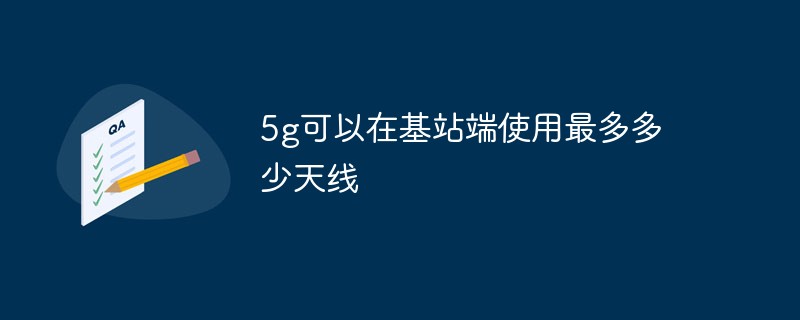 5g可以在基站端使用最多多少天线Mar 14, 2023 pm 06:19 PM
5g可以在基站端使用最多多少天线Mar 14, 2023 pm 06:19 PM最多256根天线。5G利用了先进的新型无线技术,将从前2*2MIMO提高到了目前4*4MIMO;而更多的天线也意味着占用更多的空间,要在空间有限的设备中容纳进更多天线显然不现实,只能在基站端叠加更多MIMO。理论上5G NR可以在基站端使用最多256根天线,而通过天线的二维排布,可以实现3D波束成型,从而提高信道容量和覆盖。


Hot AI Tools

Undresser.AI Undress
AI-powered app for creating realistic nude photos

AI Clothes Remover
Online AI tool for removing clothes from photos.

Undress AI Tool
Undress images for free

Clothoff.io
AI clothes remover

AI Hentai Generator
Generate AI Hentai for free.

Hot Article

Hot Tools

Dreamweaver CS6
Visual web development tools

MantisBT
Mantis is an easy-to-deploy web-based defect tracking tool designed to aid in product defect tracking. It requires PHP, MySQL and a web server. Check out our demo and hosting services.

ZendStudio 13.5.1 Mac
Powerful PHP integrated development environment

Notepad++7.3.1
Easy-to-use and free code editor

DVWA
Damn Vulnerable Web App (DVWA) is a PHP/MySQL web application that is very vulnerable. Its main goals are to be an aid for security professionals to test their skills and tools in a legal environment, to help web developers better understand the process of securing web applications, and to help teachers/students teach/learn in a classroom environment Web application security. The goal of DVWA is to practice some of the most common web vulnerabilities through a simple and straightforward interface, with varying degrees of difficulty. Please note that this software





